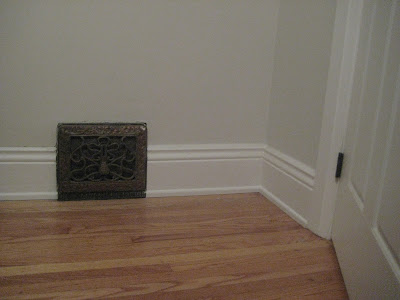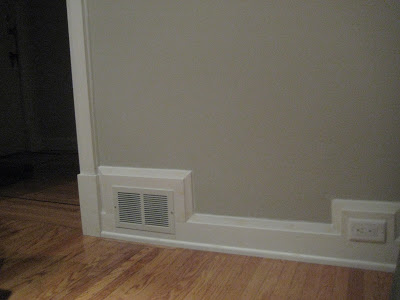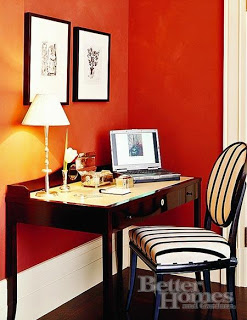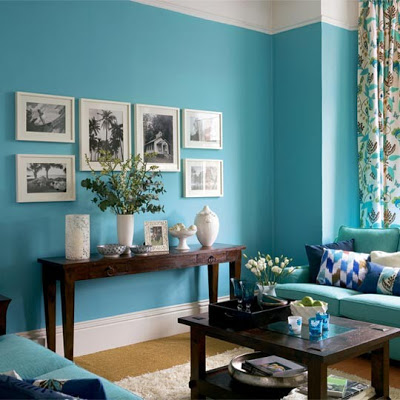One of the details most people notice in old homes is the interesting, tall baseboards. That was one of the selling features of my house, although, there was few places of it left around. Although I did discuss the possibility of coloured baseboards (see post here), it seemed too design forward for this space and worried me from a resale perspective. Instead, I stayed classic with Cloud White baseboards.
Because this baseboard was left in a few spots, I tried to find a similar height to match. One thing I did stray away from was the curvaceous look of this baseboard, and instead went with a more streamlined, Mission style baseboard.
This is something you notice in this house, but often, most people don’t even notice these details in their own house. Typically, it’s because a standard baseboard was used.
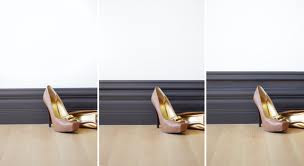 |
| Check out the various sizes and their impact! via |
This is something to keep in mind when moving into a new home. If it’s a builder home, see if they can upgrade the trims and baseboard. Or better yet, here is how you can fudge a tall baseboard, according to Chatelaine:
Start with a standard 6 1/2″ baseboard. This one (first image above) is from Home Depot and costs less than $2 per linear foot. If you’re going for a little height, add a 1 3/4″ panel moulding (sometimes called chair rail moulding). This one (second image) is about $1.50 per foot. You’ve now got a 8 1/4″ highly profiled baseboard.
Felling a little bolder? Try placing it an inch or so above the first baseboard, and painting the baseboard, section of wall and top moulding the same trim colour. You’ve now (third image) got a baseboard that’s almost 10″ tall.
